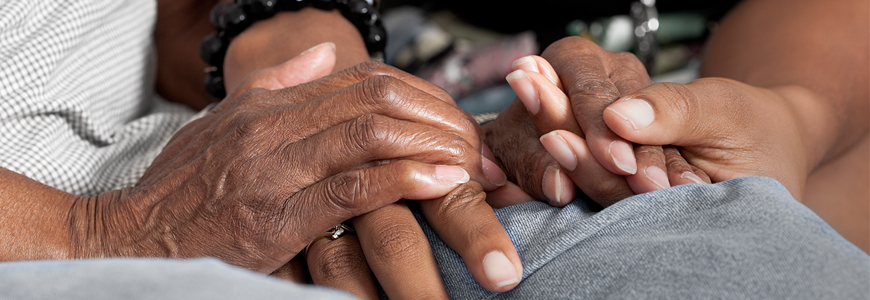A Duke Health analysis of treatments for patients with traumatic brain injuries shows that race, geographic region, and payment status were significantly associated with the decision to withdraw life support.
Specifically, the study found that African American patients were less likely than their white counterparts to undergo having life support withdrawn, while patients on Medicare and those who live in the Midwest and Northeast were more likely to have treatment withdrawn.
“The message of racial disparity in treatment decisions and goals-of-care discussions is a crucial one, especially now,” says Theresa Williamson, MD, a resident in the Duke Department of Neurosurgery and lead author of the June 2020 study published in JAMA Surgery. “It points to communication and trust between our medical providers and the patients we serve.”
Williamson and colleagues analyzed a national database of nearly 38,000 patients who had been diagnosed with traumatic brain injury. Of those, 7,864 had treatment withdrawn—a wrenching decision that families often make with the guidance and expertise of neurosurgeons, critical care, and emergency providers.
“Withdrawing life-sustaining therapy and transitioning the focus of care entirely to comfort requires rapidly building trust with the patient’s family and interpreting the patient’s wishes when they are often not able to express those wishes themselves,” says Duke neurosurgeon Jordan M. Komisarow, MD. “We do our very best to structure all aspects of our care, including care at the end of life, as best as we are able to align with the patient’s wishes in a dignified manner.”
Some treatments include craniotomy, intracranial pressure monitoring, or mechanical ventilation, but the benefits and harms of these measures are highly dependent on individual circumstances, which are often unpredictable. Data and clinical evidence are scant, providing little direction.
“Despite guidelines for managing traumatic brain injuries, there is no clear threshold for withdrawing treatment,” Williamson says. “As a result, a combination of clinical factors contributes to this decision, including the patient’s age, degree of injury and extent to which the patient showed signs of improvement over time.”
But demographic and socioeconomic factors also appear to be influential, Williamson’s research showed. The researchers found that treatments for traumatic brain injuries are more likely to be withdrawn among:
- White patients compared to Black and “other” race patients
- Patients in hospitals in the Midwest or Northeast compared to those in the South
- Patients with Medicare and self-pay patients vs. those with private insurance
- Older patients and those with clinical measurements such as lower coma scale; scores, higher injury severity scores, craniotomy, hematoma and dementia
“These results highlight the multitude of factors that contribute to decision-making in traumatic brain injury and demonstrate that in a complex and variable disease process, variation based on race, payment, and region presents a potential challenge,” Williamson says.
The findings add to an earlier study the team published in PLOS ONE, which found that the prognostic predictions of neurosurgeons were highly variable, indicating a need for more and better data on treatment options. In addition, knowing that predictions and data are variable and subject to bias, providers need to understand how to communicate prognosis and goals of care with patients of various backgrounds.
“We do our best to approach each situation and family with an open mind and to listen as thoroughly as possible to everyone’s desires, fears, and concerns,” Komisarow adds. “Sometimes just acknowledging how horrible the situation is can go a long way in ensuring you are on the ‘same side of the table’ as the patient and their family. We must be extra vigilant about being non-judging and respectful to situations and decisions we may not immediately understand.”
Williamson says future studies are focusing on these interactions and will include interviews with brain injury patient families to better understand the challenges in communicating uncertain news and ways in which it can be improved.
“There is a need for improved training and tools for cross-cultural discussions on goals of care, particularly in the emergent setting when decisions are made quickly and it can be challenging to establish trust,” Williamson says.
